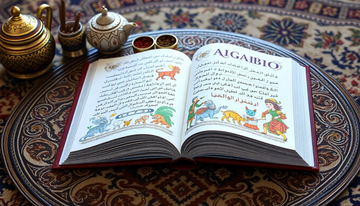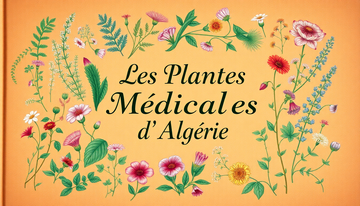Algerian tales and fables are a true treasure of the culture and identity of Algeria. For centuries, these traditional stories, passed down orally from generation to generation, have shaped the collective imagination of the Algerian people, conveying moral values, lessons of wisdom, and a deep understanding of the country's history and traditions.
Origins of Algerian Tales and Fables
The roots of Algerian tales and fables are embedded in a blend of Berber, Arab, and Mediterranean influences. Since antiquity, the various civilizations that have succeeded on Algerian soil have enriched this oral heritage, creating a fascinating diversity of narratives.
Berber tales, for example, reflect the ancestral roots of the indigenous populations of the Maghreb, while Kabyle legends draw from the traditions of Algeria's mountainous regions. Stories from the Algerian Sahara evoke the nomadic life and mysteries of the desert. This heritage was later enriched by Arab-Muslim influences, giving rise to fables imbued with symbolism and spirituality.
Recurring Themes in Algerian Tales and Fables
Despite their diversity, Algerian tales and fables share recurring themes that contribute to their richness and uniqueness. Often, these stories convey moral values and lessons of wisdom, inviting readers or listeners to reflect on existential, ethical, or social questions.
Among the iconic characters populating these stories are brave heroes, venerable sages, fantastic creatures like djinns, and animals endowed with human qualities. These protagonists embody universal archetypes while reflecting the specificity of Algerian culture.
The use of animals in Algerian fables is particularly significant. Similar to Aesopian traditions, these stories use animals as vehicles for moral messages, exploring themes such as cunning, strength, weakness, and solidarity.
Regional Diversity of Algerian Tales
The richness of Algerian tales and fables is also evident in their regional diversity. Each region of the country has developed its own oral tradition, reflecting the cultural, linguistic, and geographical specificities of its populations.
Berber tales, for instance, are deeply rooted in the mountains of Kabylie and the Rif, featuring characters and landscapes typical of these areas. Kabyle legends draw from the beliefs and mythologies of the Berber communities in Algeria.
Similarly, stories from the Algerian Sahara depict the lives of nomads, their challenges, superstitions, and ancestral traditions. These captivating narratives transport the reader into a desert world filled with mystery and spirituality.
Oral Transmission in Algeria
Oral transmission has always been at the heart of preserving and disseminating Algerian tales and fables. For centuries, traditional storytellers, true guardians of this intangible heritage, have played a crucial role in safeguarding and passing down these stories.
In many Algerian communities, gatherings around the fire or family assemblies were opportunities for these storytellers to captivate their audience, thereby transmitting ancestral tales from one generation to the next. This act of oral transmission was of paramount importance, not only for entertainment but also for educating and socializing children.
Preservation and Modernization of Oral Heritage
Today, in the face of evolving lifestyles and the growing influence of modern media, efforts to preserve and promote Algerian tales and fables are crucial. Various initiatives have emerged to collect, transcribe, and disseminate this oral heritage, ensuring its recognition among current and future generations.
Projects to collect and publish traditional tales have helped safeguard part of this intangible treasure. Additionally, adaptations in the form of books, podcasts, or videos have contributed to modernizing the transmission of these stories, making them accessible to a broader audience.
Algerian Tales on the Global Stage
Beyond Algeria's borders, the country's tales and fables have gained international recognition. In 2008, UNESCO inscribed the "Cultural Spaces of the Aït Khebbach" on the Representative List of the Intangible Cultural Heritage of Humanity, highlighting the richness and diversity of the region's oral traditions.
Moreover, Algerian tales have also influenced contemporary Maghreb literature, inspiring many writers in their quest to preserve and promote the region's cultural heritage.
Discovering Algerian Tales and Fables Today
Today, there are numerous resources available to discover and appreciate Algerian tales and fables. Specialized books, websites, and cultural initiatives offer privileged access to this oral heritage.
Curious readers can immerse themselves in collections of traditional tales, listen to podcasts by Algerian storytellers, or attend festivals celebrating these ancestral stories. These experiences provide an opportunity to familiarize oneself with the richness and diversity of this intangible heritage, while contributing to its preservation and transmission to future generations.
Conclusion
Algerian tales and fables are an invaluable treasure of the culture and identity of Algeria. For centuries, these traditional stories passed down orally have shaped the collective imagination of the Algerian people, conveying moral values, lessons of wisdom, and a deep understanding of the country's history and traditions.
Despite the challenges of modernity, efforts to preserve and promote this intangible heritage are essential to ensure its continuity. By discovering and sharing these tales and fables, we contribute to safeguarding a unique cultural legacy that embodies the richness and diversity of Algeria.






